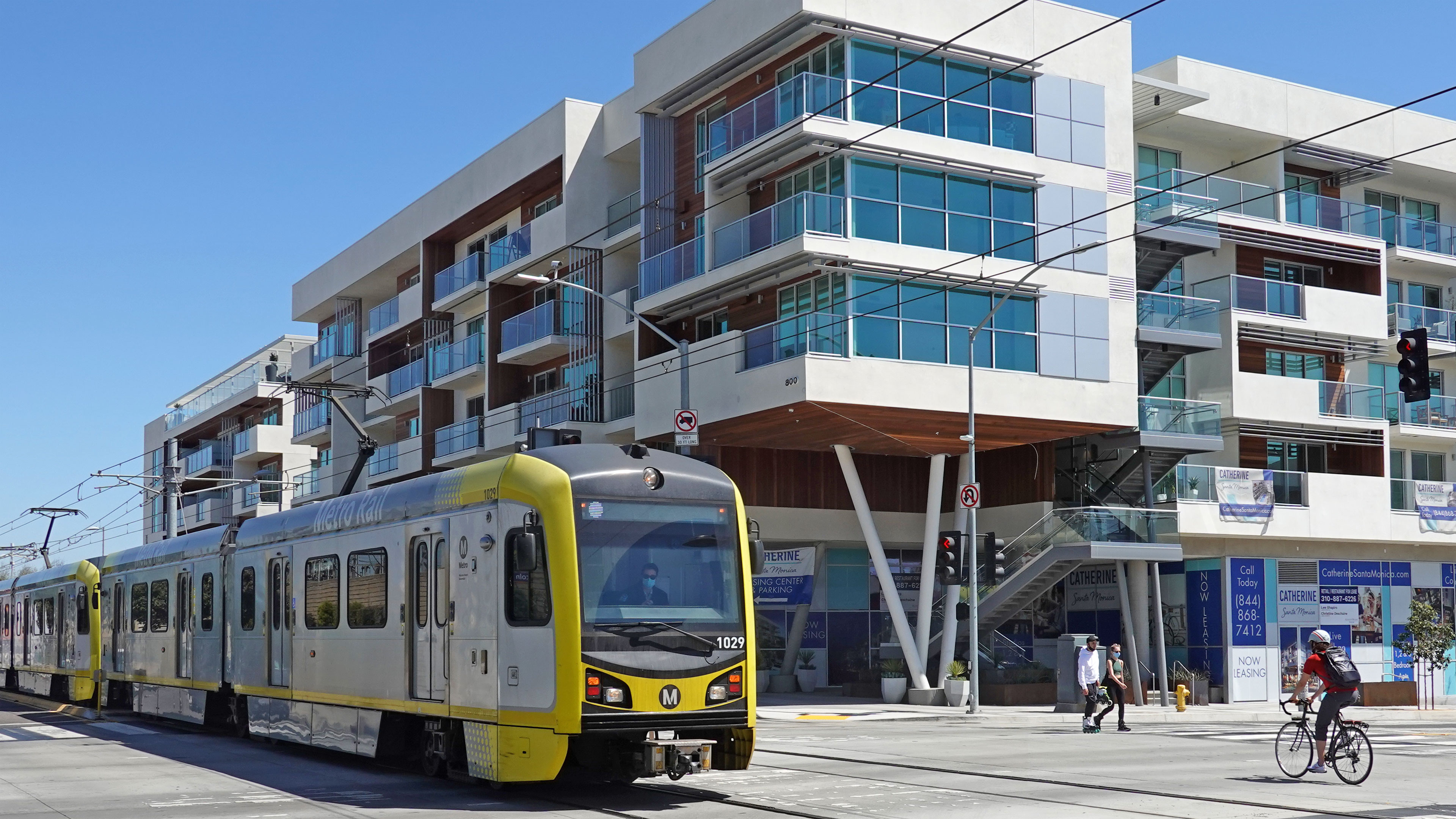Let me tell you about my neighbor Abigail [name changed for privacy purposes]. We live in a moderately upscale single family neighborhood in a large metropolitan region. She proudly displays yard signs proclaiming her support for gay rights, the Black Lives Matter movement, abortion rights, and her opposition to book bans. When we chat casually at the dog park she clearly casts herself as an environmentalist - she's extremely worried about climate change, she drives a Prius, she avidly recycles.
But one important connection is missing: She doesn’t understand the ways that Smart Growth (such as denser development and better transit) will contribute to the better world she desires.
Abigail thinks of her home as an "oasis" where she can "escape from the issues and aggravations of the outside world."
Because of that, she has advocated against projects that would actually help our community reduce transportation pollution. For example, she opposes the construction of a new light rail line near our neighborhood, largely because 500 mature trees will need to be chopped down along the 15-mile route. She doesn't see the huge net benefit to the environment of getting thousands of gas-powered cars off the road when the light rail opens, which would offer a safe, convenient option for many trips.
Abigail also opposes city legislation currently under review that would modify the city's zoning to permit denser housing in our neighborhood (and similar "single family" neighborhoods throughout the city). The legislation under consideration would permit Accessory Dwelling Units (ADUs, sometimes dubbed "granny flats") in our neighborhood. Another possible provision would permit any tear-down (of an existing home) to be replaced by a duplex (rather than the million dollar plus McMansions that have been springing up on nearby streets over the past few years). She worries that "neighborhood character" would decline.
I see an opportunity for education in my conversations with my neighbor. I'd like to gently nudge Abigail to better understand why improved public transit (such as the new light rail) and increased housing density (facilitated by ADUs and duplexes in our neighborhood) are a critical piece of our city's - and the nation's - response to climate change.
The Sierra Club’s latest guidance on infill development is a convincing explainer of how Smart Growth is central to addressing climate change and will simultaneously provide many folks with an enhanced overall quality of life.
Of course, I can’t expect Abigail to read that entire report. But perhaps the next time I see her at the dog park I can highlight a couple of its key points. I would start with these:
TRANSPORTATION: Better non-car options for folks to get to where they need and want to go will mean less fossil fuels pumped into the atmosphere. Thus, improved infrastructure for folks to walk and bike conveniently and safely will encourage more people to take more trips by foot or bike, rather than by car. The upcoming light rail project near our neighborhood will enable Abigail and me and our neighbors to get to the nearby commercial center (for a dinner out or a dentist appointment, for example) without driving. Importantly, many of those who work at the commercial center (such as busboys, dental technicians, and others, who often live 10 miles away in a cheaper town) will also use the light rail as a cheaper and more convenient way to travel. All of this will add up to expanded transportation options for many (including Abigail and me) and a reduction in the use of fossil fuels. In short, an improved quality of life for many of us and a big step in addressing climate change.
HOUSING: In our region, we are in a housing crisis. In essence, the supply of housing is insufficient to meet the demand. This is why the cost of housing is so high. This is a bad situation for all of us. But it's particularly tough for families with limited income and wealth - they often pay 40% (or more) of their monthly income for rent (or mortgage payments); and/or they are forced to live far from their jobs - spending many hours and dollars to drive long commutes. Which brings us to the proposals under review at the city council. Permitting ADUs and duplexes in our neighborhood (and similar ones throughout our city) will not "solve" the housing crisis. But such changes would get the ball rolling, creating new housing units (of more modest size than the McMansions that are currently infiltrating our neighborhood) in a great location, the neighborhood Abigail and I both love dearly.
Like it or not, the "character" of our neighborhood has been changing and will continue to change in coming years. The question is - what will be the nature of this change? Developers are building McMansions in our neighborhood because the existing zoning regulations only allow single family homes to be built. If duplexes and ADUs were permitted, developers would respond accordingly. That’s the beauty of public policy. If we are serious about addressing climate change, we should start right here in our neighborhood. By supporting the council proposals on ADUs and duplexes, we can help create more housing in a desirable location, enabling more folks to enjoy the benefits of living where we do.
The above is probably a little too much for a single dog park conversation. But when I next see Abigail, I think I'll get started.
Maybe you too know someone like Abigail - a very nice person, progressive in most respects, but without a good understanding of how local transportation, land use, and housing policies and programs can be used to address climate change. If so, perhaps some of my thoughts and ideas above may help you talk gently but firmly to this person. Neighbor to neighbor, in our own communities, we can advocate for change for a livable planet for all.
